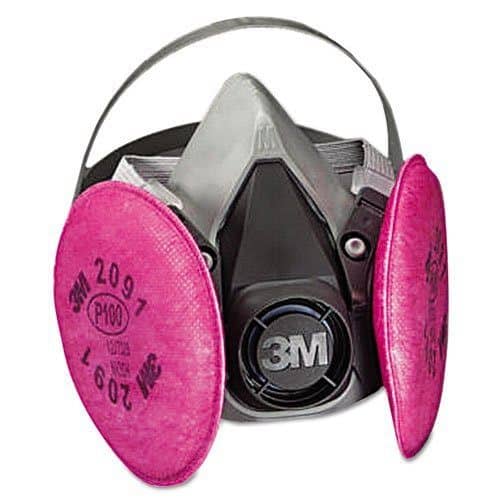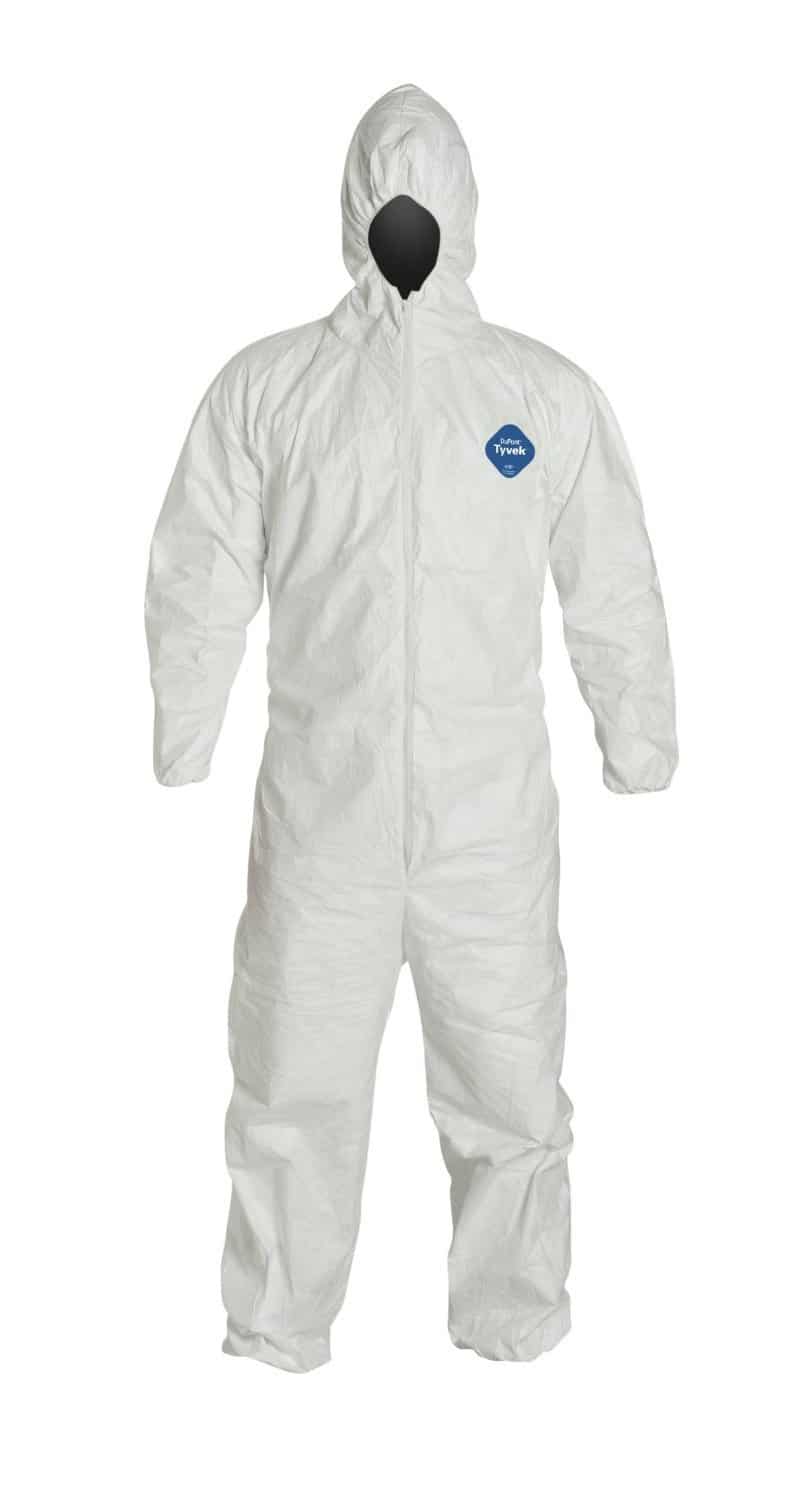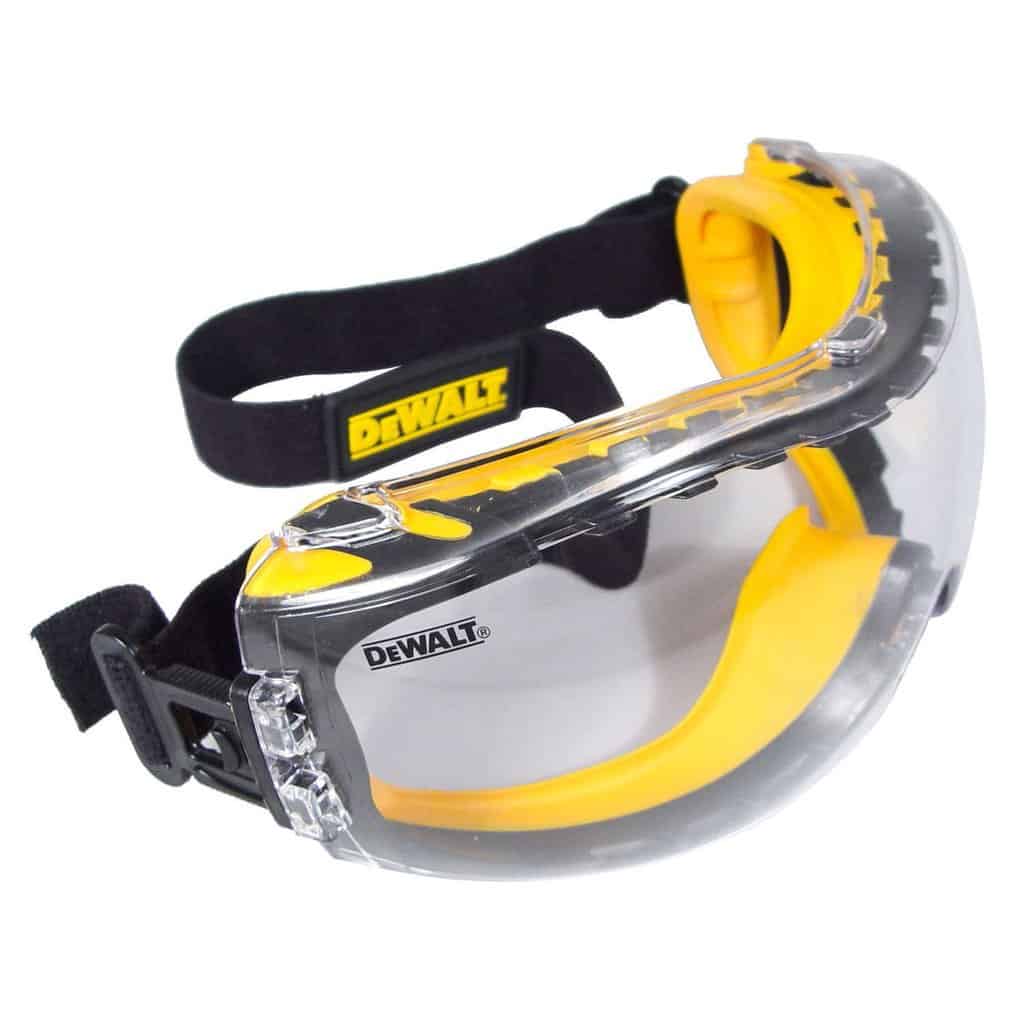Background and History of Asbestos Vinyl
Asbestos vinyl flooring was widely used until 1972. Vinyl is made from a combination of ethylene and chlorine that result into a plastic resin. Back then, asbestos was the additional component that improves its strength and insulating properties. Apart from vinyl flooring, asbestos was also used in wallpapers and ceiling tiles.
If the vinyl is intact, it doesn’t pose any threat. However, problems started to arise when floorings are cut, damaged, or get worn out through time. Back then, those most susceptible to having asbestos related diseases were vinyl factory workers, floor installers and construction workers.
Don't Guess - Test and Have Peace of Mind!

When the dangers of asbestos became an issue, then careful vinyl flooring asbestos removal became an issue. One option is just covering asbestos flooring with the new flooring material like carpet, vinyl tiles or sheet vinyl, laminate or hardwood flooring, or even ceramic tiles and stone.
Testing for asbestos in vinyl flooring can be done by professionals or by yourself to determine “is there asbestos in my vinyl flooring” or not. Asbestos in vinyl flooring isn’t the end of the world, but asbestos and vinyl flooring do cause concern for your health. Use precaution if you elect to remove asbestos vinyl flooring so that its potential doesn’t become your reality.
Until 1972, asbestos was used in a variety of building material such as roofing, exterior siding, window sills and linings, and vinyl flooring. Asbestos is a group of minerals known for their strength, flame/heat resistance, and indestructibility, and was considered ideal for insulation and fireproofing. However, once it was discovered that asbestos fibers can result in severe illness and disease when inhaled, the use of asbestos was banned by the EPA.
How to Check if There is Asbestos Flooring in Your Home.
Unless clearly marked on the product’s label, asbestos is impossible to identify without examining a sample under a microscope.
A. Size of Tile
One easy way for you to know if it is an asbestos vinyl is through the size of the tile. Before the 1990s, these tiles were manufactured in 3 sizes: 9 x 9 inches, 12 x 12 inches, and 18 x 18 inches. At present, standard square vinyl tiles are only 12 x 12 inches.
B. Brand of Tile
If you can still find out which brand of tiles was installed, here are some brands that manufactured asbestos flooring: Excelon, Fashionflor, Flor-Ever, Gold Seal, KenFlex, KenTile, Sears and Solarian.

C. Laboratory Testing
Testing for asbestos vinyl flooring can be done by a professional asbestos contractor or by using a do-it-yourself sampling kit.
- First, you would need to cut off a portion of your vinyl flooring as a sample. Spray water mixed with liquid detergent on the area where you're going to cut the sample from. The mist will ensure that asbestos fibers will not dissipate into the air.
- Using a utility knife, cut a small strip of the tile, around 1/8 x 1 inch in size. Cut all the way to the bottom so you can include the backing and the adhesive in the sample.
- Place the sample into the bag and ship it back to the testing laboratory.
- Wait for the result and if the sample consists of more than 1% asbestos, then it means your floor does contain asbestos.
Your Options: Removal or Installing a New Floor On Top
If your asbestos vinyl flooring is chipped, crumbling, or frayed, it must be removed before laying a new floor. The asbestos fibers from the damaged floor can cause health concerns when the fibers are released into the air. However, intact asbestos vinyl flooring should not be removed because the removal of an intact floor poses a greater risk than simply covering over the old flooring. Leaving the old floor as is will be the most safe action you could take because you’re not disturbing the asbestos in the material.
Considerations and Risks Before Removal
If you determine that the asbestos vinyl flooring must be removed, asbestos abatement contractors are highly recommended. Homeowners living in a single family home may also remove the asbestos but legally, family members and friends who help must do so voluntarily and without pay. Moreover, if you as a homeowner are not confident in your ability to safely remove the asbestos vinyl flooring, hire a certified asbestos abatement contractor. Asbestos removal is difficult work, and can be physically demanding and potentially dangerous to your health.

Asbestos fibers are up to 1,200 times finer than human hair and when inhaled, they can directly penetrate your lungs. Even after 3 decades of inhalation, asbestos can lead to lung cancer, mesothelioma, breathing problems and heart failure. Even the slightest exposure to asbestos can be risky, that is why medical experts emphasize taking precautionary measures when dealing with asbestos in home improvement projects.
Tools and Gears Needed for DIY Removal
If you’ve accepted the health dangers involved, you can minimize the risk of exposure to asbestos fibers for do-it-yourself removal by wearing safety equipment such as a respirator, coveralls, gloves, rubber boots and safety goggles. You need to fasten your gloves to the coveralls with tape, to make sure that they won't come off. Plus, tools such as spray bottles, liquid detergent, putty knifes, a utility knife, a still floor scraper, plastic sheeting, duct tape, plastic garbage bags, a mop, and disposable towels will be needed.
Check out this DIY video on how asbestos vinyl floor tiles are removed.
You can do better than the woman in the video by wearing the other required protective equipment. Note that breathing through a respirator can be challenging and the coveralls can be uncomfortable. Removing the tiles on your own will be time consuming. On average, a 2 square-meter area can take around 1 to 2 days. Do take careful consideration before embarking on a DIY floor removal project.
Steps in Removing Asbestos Flooring
Step 1: Protect The Area
The goal in removing the asbestos vinyl flooring is to remove it in whole pieces without causing any dust.
- Before beginning, the work area must be isolated using the plastic sheet over heat registers, doorways, cupboards, ect. and the heating and air conditions system must be turned off.
- All furniture and other moveable objects should be removed from the room to prevent contamination and to simplify clean-up.
- Access to the work area should be limited to one doorway, with a slit in the plastic door covering to make the entrance as small as possible.
- Post a sign outside the house or inform your friends and relatives that they cannot visit the house at this time.
- Keep the pets away from the work area as well.
- To further prevent asbestos fibers from spreading, the floor must be kept wet using a water bottle. The water will also help loosen the tiles and make removal mush easier.
- Keep your supplies ready near the doorway, which includes water bottles, rags, buckets and trash bags.
Step 2: Removal
- Once prepped and your safety gear on, cut the vinyl flooring into the manageable sections with a utility knife, and remove the pieces by pealing from the edges and using a flat scraper to lift the vinyl.
- Continue to wet the flooring as you scrape and pull to minimize dust. Any vinyl backing that separates from the vinyl flooring can be removed by thoroughly wetting and scrubbing the floor with a pad.

Step 3: Clean Up and Disposal
- As you remove the vinyl, place the pieces in sturdy plastic trash bags to avoid leakage and mark the bags "Danger! Asbestos-Containing Materials." Regulation also states that you should write your last name, address and removal date on the trash bag. The trash bags should be 33 x 50 inches in size and should be 6-mil thick polyethylene.
- The asbestos debris can only be disposed of in a landfill that accepts asbestos-containing waste. Consider calling the land-fill before you go to ensure you understand all their requirements.
- Careful clean-up is important when dealing with asbestos, and all potential asbestos dust and particulate must be removed from the work area to avoid future asbestos contamination.
- Wet and remove all debris left on the plastic sheet used to cover the counters, furniture, and equipment. Then roll them carefully and place them inside the trash bags.
- Twist the top of the bags and then seal them with duct tape.
- Wipe all surfaces and scraping tools with a damp cloth. Frequently rinse the cloth and change the water so that the surface in the work area can get truly clean. Once you're done with the rags, dispose them properly.
- Collect all your tools and put them in a bucket or plastic bag, so you can clean them later.
- Next, stand on a plastic sheet and spray yourself or your companion with water to wash down any remaining asbestos fibers. Only then will you be able to remove your respirator, gloves, boots, goggles and coveralls.
- Place your towels, mop heads, and coverall suit and gloves in the disposal bag. You can dispose of the boots or place in a plastic bag for cleaning later. Remove the filters in your respirator and dispose of them
- To ensure that your skin and hair is free of asbestos, immediately take a complete shower and wash carefully.
Don't Guess - Test and Have Peace of Mind!

When the dangers of asbestos became an issue, then careful vinyl flooring asbestos removal became an issue. One option is just covering asbestos flooring with the new flooring material like carpet, vinyl tiles or sheet vinyl, laminate or hardwood flooring, or even ceramic tiles and stone.
Testing for asbestos in vinyl flooring can be done by professionals or by yourself to determine “is there asbestos in my vinyl flooring” or not. Asbestos in vinyl flooring isn’t the end of the world, but asbestos and vinyl flooring do cause concern for your health. Use precaution if you elect to remove asbestos vinyl flooring so that its potential doesn’t become your reality.




OK, so what if you already ripped up an entire floor that may have had asbestos dust flying everywhere? Do you immediately become sick?
Hi Laura,
If you still have any of the flooring around, you can buy a testing kit at Lowe’s, Home Depot, etc. and find out for sure so you don’t have to (hopefully!) worry yourself needlessly.
To learn more about asbestos (hazards, health issues, etc.) here is a link for the EPA: http://www.epa.gov/asbestos/
Hoping you’re worrying needlessly ……..
Hi, I live in a home built in 1900 an recently went to Lowe’s to purchase new carpet to go over old sheet vinyl in a spare bedroom but after having the measurements done the installer told Lowe’s they wont install the carpet until I remove the old floor and have it re-inspected. Lowe’s stated this is how all of their contractors are. The floor is in great shape since it sees little to no foot traffic, should there be any reason why not to just lay the carpet? thanks
Hi Jeff,
………and have it re-inspected for what?? Asbestos? Are you saying that it’s been inspected for asbestos before? What were the results?
I can understand a contractor’s concerns about asbestos flooring – I wouldn’t want to work on it either – I’d be wanting to see test results to assure me that it does not contain asbestos – it’s too great of a health hazard.
It doesn’t cost much to have a test done — Lowe’s should have home testing kits available, you put the sample in a vial and send it off to be scrutinized under a microscope.
Hi again, No the floor was never tested for asbestos, the contractor just visually looked at the floor and stated the floor contained asbestos and refused to lay any carpet in the room until the floor was abated and the installer had a chance to re-inspect the room to make sure it meets their standards for abatement and safe work conditions. I have since sealed the floor with an epoxy floor coating and hired another company that saw no problem with stretch fitting in carpet over the existing flooring.
Hi Jeff,
Pfft! Nobody can tell for sure if there’s asbestos without having it tested. Sealing it with the epoxy floor coating was good – if there’s asbestos, this will stabilize the flooring, hence, taking care of any hazard. Good job!
My house was built in 1978. So, I do not have to worry about asbestos….right??
Hi Wheady,
That would be correct.
What methodology does Home Depot use to remove vinyl or not. I noticed they now have a charge to remove vinyl whereas they did not 5 years ago when I had another floor done.
Hi Dandy,
That would be a good question for Home Depot. I am not privy to their policies.
I took up an old floor, about 55 sqft of vinyl tiles form the 60’s. they where brittle and and broke easily. I am now convinced that they contained asbestos, looking at the edge of a broken piece with a magnifying glass you can even see the chunks of mineral in the tile.
To make matters worse, the floor was swept and vacuumed. What is my best course of action now to clean the room? The whole house?
I live in a log cabin built in 1986 we are redoing the laundry room when i went to purchase vinyl flooring the guy told me it probably has asbesto in it do i hae to worry. I already started to rip it up so its already been disturbed
I forgot to ask PLEASE HELP
Tina
Hi Tina,
You do not have to worry about asbestos being in vinyl that was installed in 1986.
Hi Jim,
Sorry to hear you have entered the “Asbestos Zone”. You have clearly stirred the fibers up. I think you need to call an expert team to see what their recommendations are. Chances are they will say they need to come in and do a HazMat clean up. Be sure to ask lots of questions about what they are going to do and what that’s going
to accomplish for you.
Good luck!
My home was built in 1979. It has a glued down sheet vinyl floor. Is it OK to remove it?
Thank you for your help.
Hi Paul, Yes, it would be fine to remove it. If it’s still in good shape, and depending on the type of flooring you wish to install, you could install right on top of it.
Our home was built in 1979 and we want to install tile flooring where linoleum currently is. We do not believe this is the origial linoleum. Do we need to worry about asbestos? Can we install the concrete board right on top of the linoleum, or should we remove it first?
Thank you, Laura
You can still buy products from the big home improvement companies that contain asbestos and that includes floor tiles and even drywall. Asbestos is not banned in the U.S. It is a myth. Corporations are still selling it to you but try to hide the name asbestos. Look for the term “natural fibers” especially if it was made in Canada where it is still mined today. By the way if you are removing floor tiles look for a respirator not a dust mask that is made to filter out asbestos. The cheap ones with the rubber bands let the asbestos go right through which is more dangerous than nothing because you think you are protected and stay in the hazardous environment longer. Before you do ANY home improvement check into the materials you will be working with and if any doubt have them tested. Asbestos is everywhere including your drinking water. The old city water pipes were lined with concrete with asbestos in it. It is in some old joint compound, old caulking, siding, aluminum paint, peg board, some insulation, linoleum… Testing costs normally between $8.00-$40.00 and please get your kids out of the house while working. It’s up to you to be safe. The government and the corporations aren’t watching out for you or your family.
Hi Laura, I wouldn’t take any chances if there is a concern that there might be asbestos. You can have it tested to determine if there is asbestos and if there is, you can have it removed. If the vinyl is damaged in any way, you must have it removed before laying new floor.